Building Cultural Responsiveness: Learning, Reflection, and Goals for Social Work with Indigenous Communities
Introduction
Cultural responsiveness is the way where cultural safety is provided by means of anti-racism, equality, and respecting the beliefs and values of indigenous people. Safe and responsive care and services are fostered among Indigenous people where rights are protected. In this report, the key learnings, such as the IAHA Framework and cultural responsiveness, are highlighted, along with a critical discussion of the Aboriginal and Torres Strait Islander Knowledge Theory and Critical race Theory. Lastly, 3 goals are identified which are helpful to become an adept social worker.
Examining the key learnings
Impact of the learning on personal assumptions/beliefs or values
IAHA Cultural Responsiveness Capability Framework
The learning journey significantly challenged and transformed my values, beliefs, and assumptions about working with Aboriginal and Torres Strait Islander peoples, which I learned in Week 5 learning modules. As my cultural understanding was limited, delving deeper into the IAHA Cultural Responsiveness Capability Framework was highly effective which helped me to understand cultural nuances and the importance of cultural learning. Colonialism and the atrophy of Indigenous male identities in the form of cultural supervision, understanding trauma, and working with communities, followed by relationship building, are highly relevant to Australian social work (Russ-Smith, 2019). In this way, this transformed my knowledge with new and innovative approaches, where I received valuable insights into social work practices with Indigenous communities.
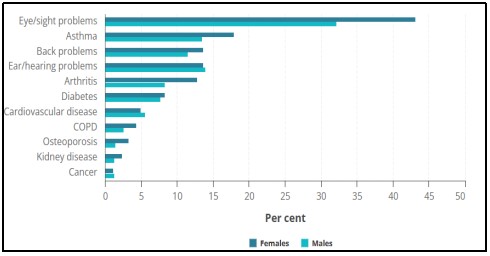
Figure 1: Prevalence of long-term conditions of First Nations people
(Source: AIHW, 2024)
Apart from these, a transformative aspect was the knowledge development concerning the role of historical and systemic oppression in shaping Aboriginal and Torres Strait Islander peoples. Australia is a multicultural country where societal and emotional well-being varies across different cultural groups (Green, 2019). My beliefs are now questioned as I see the burden of chronic and fatal diseases among the islander people, where 67% of the First Nations reported one long-term health condition (AIHW, 2024).
Impact of learning to develop cultural responsiveness as an emerging social worker
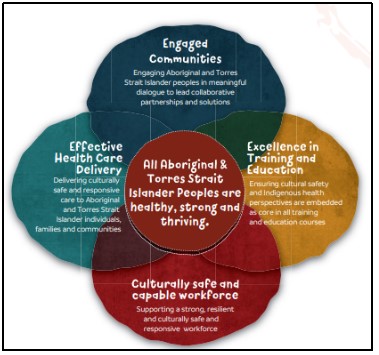
Figure 2: IAHA framework
(Source: IAHA, 2020)
Cultural Responsiveness and anti-racism
While the development of cultural responsiveness is considered, the IAHA framework is effective which is aimed at the respect for the centrality of culture. The IAHA framework is invariably linked to all Aboriginal & Torres Strait Islander Peoples while providing them with educational excellence and effective healthcare delivery and making them a culturally safe and capable workforce (IAHA, 2020). For this reason, I feel there is a right for the Indigenous people as their voices need to be heard, and they must be culturally responsive. In my view, the culture, language, and belief system of 350 nations of Australia need to be properly understood to become a genuine social worker.
The critical race theory reflects the colourblind approach, where the reproduction and perpetuation of racial violence and racial inequalities are demonstrated (Busey et al. 2023). In this regard, being an emerging social worker can provide a proactive stance against racism where actions are taken over systemic discrimination, racial prejudice, and unequal distribution of power. Besides, indigenising social work includes proper training and education to address colonial structures to create a new future (Green, 2019). Hence, recognising cultural responsiveness is paramount, where I am able to make meaningful connections with the Aboriginal and Torres Strait Islander peoples.
Culturally Responsive Practice through Aboriginal and Torres Strait Islander Knowledge and Critical Race Theory
With the development of culturally responsive practice within social work, there is a requirement of deep engagement with the theory of Aboriginal and Torres Strait Islander Knowledge. Aboriginal and Torres Strait Islander Knowledge can also be known as the traditional knowledge theory, where the skills and practices of the original people of Australia and Torres Strait are recognised for the summarisation of visual art-related knowledge (Dudgeon & Milroy, 2014). The perspective provides a thorough understanding of the determinants of health and wellness in Indigenous communities through deep listening and patient communication (Gmez-Baggethun, 2022). In my opinion, this teaching emphasises the importance of relationality and spirituality, as well as interconnectedness, with the collected well-being of spirituality. Throughout this unit, I have critically examined the Indigenous frameworks by reflecting on how these challenges the Western-centric paradigms as well as foster practices. In my view, these practices are more aligned with the needs along practices of the First Nation countries.
Influence of Aboriginal and Torres Strait Islander Knowledge on Culturally Responsive Practice
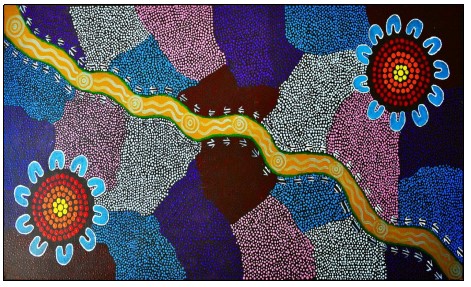
Figure 3: Aboriginal and Torres Strait Islander Knowledge Theory
(Source: Dudgeon & Milroy, 2014)
One of the core learnings from this particular unit is the Indigenous concept of country, an aspect of geographical space. As I feel it, this also signifies a profound source of spirituality, identity as well as the well-being of the people. This particular worldview proposes a significant challenge to the aspect of social, spiritual and emotional dimensions of the people, which in turn emphasises the prospect of interconnectedness (Dudgeon & Milroy, 2014). Applying these principles has changed and reoriented my thought process towards holistic care practices, which are about addressing the complex determinants of well-being. In my view, there are also frameworks such as Social and Emotional Wellbeing (SEWB) that highlight the importance of kinship as well as spirituality and cultural identity in terms of achieving a positive amount of health outcomes. SEWB also puts an emphasis on well-being in a collective manner rather than being focused on a single individual (Calma, 2009). This aspect compelled me to consider working on social interventions to engage with other individuals and provide service to a broader community.
Incorporating Critical Race Theory in Culturally Responsive Practice
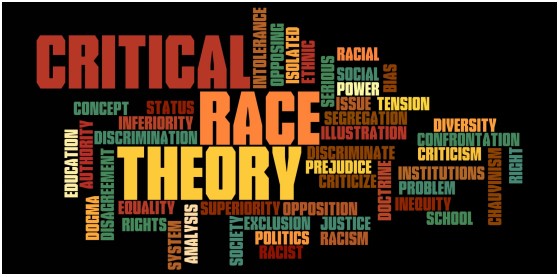
Figure 4: Critical Race Theory (CRT)
(Source: Delgado & Stefancic, 2023)
The critical race theory provides an in-detailed framework for the understanding of racism in the people which is embedded in the system, policies and prejudices (Delgado & Stefancic, 2023). As I see it, it also shaped my experiences of Aboriginal and Torres Strait Islander principles. CRT challenges the notion of neutrality in social institutions and provides a thorough argument related to systemic racism that needs to be changed (Busey et al. 2023). Informed by this theory, I understand that being culturally responsive is not as same as simply acknowledging cultural differences. In my professional journey, the aspect of CRT influences me to engage in cultural complexity, where I do a continuous examination of my biases. With the critical engagement of these theories, I can make sure that my practice is more attuned to the needs of the Aboriginal communities.
Planning a course of action
Goal 1: Heightening anti-racist practice and historical awareness
I need to delve deeper into the effects of colonisation and systemic racism on the First Nations communities where Indigenous governance and Western values are highlighted. Moreover, Indigenous data sovereignty or ID-GOV is highly beneficial, and the principles must be enacted to empower the Aboriginal and Torres Strait Islander peoples (Prehn & Walter, 2023). For this reason, I need to consider social work as a profession committed to fostering equal rights where anti-racism is paramount. Furthermore, I must integrate the crucial principles of ID-GOV where inequalities are removed. Finally, I need to understand the socio-political contexts of the country to advocate the policies wherever required. However, constant involvement in historical aspects may create a source of boredom and may affect new social workers in providing consistent support single-handedly.
Goal 2: Advocacy for Culturally Safe and Strength-based practices
My second goal is to advocate for culturally safe as well as responsive environments that foster the aspect of empowerment as well as self-determination. This can be done by applying the principles of the SEWB framework in practices with active promotion of strength-based approaches (Dudgeon et al. 2020). In my opinion, this aspect highlights the resilience and wisdom factor of Aboriginal communities. I will work in a collaborative manner with the indigenous clients so that I can co-design the interventions. Co-designing the community intervention will allow for a thorough reflection of the values and priorities of the communities (Porche et al. 2022). On top of that, I will challenge the structural inequalities within the organisations regarding racism and advocate for policy reforms.
Goal 3: Culturally safe interventions with ACSW Framework
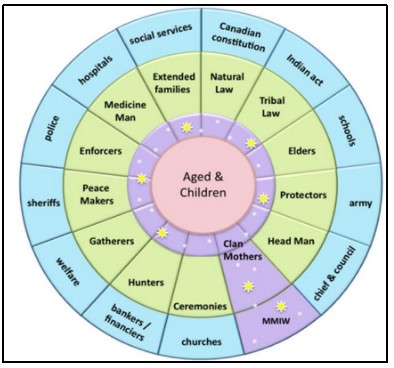
Figure 5: First Nation Governance status
(Source: ACSW, 2019)
I shall engage with the Alberta College of Social Workers ACSW and The Indigenous Social Work Committee or ISWC frameworks and guidelines with 7 pivotal steps in the form of respect, love, courage, honesty, wisdom, humility, truth (ACSW, 2019). In this way, I can enhance my learning toward cultural responsiveness and become adept in social work. Besides, the Indigenous practice guidelines are of immense significance where I can further improve my knowledge of decision-making to become a cultural advisor for the First Nations communities. However, as these frameworks apply a generalised approach, unique cultural differences may not be fully understood and require a lot of effort to empower Indigenous people.
Conclusion
This learning journey has had a profound impact on me as it helped me to reshape my understanding of culturally responsive practices. This emphasised the need to integrate aboriginal and Torres strait islander knowledge and critical race theory into social work. This also called into question my assumptions that fostered a deep appreciation for cultural identity as well as historical trauma, let alone systematic oppression. As moving forward, I have the aim to co-design the interventions with the indigenous communities to promote their self-determination and challenge the structural inequality.
Are you struggling to keep up with the demands of your academic journey? Don't worry, we've got your back!
Exam Question Bank is your trusted partner in achieving academic excellence for all kind of technical and non-technical subjects. Our comprehensive range of academic services is designed to cater to students at every level. Whether you're a high school student, a college undergraduate, or pursuing advanced studies, we have the expertise and resources to support you.
To connect with expert and ask your query click here Exam Question Bank

